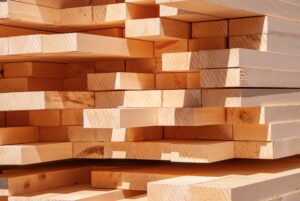 As the cross-border trade war escalates, Canada’s softwood lumber industry has an advantage on its side that no tariff can completely erase – its product is objectively better than much of the timber harvested from US forests. Softwood supplies, especially from BC and Alberta, are widely viewed as more desirable for wood framing because the growth rings are tighter than those found in lumber in the US South. In the milder climate of the U.S. South, the growing season is much faster. It takes about 35 years before southern yellow pine (SYP) trees are harvested. …Canada’s secret weapon, however, is hiding in plain sight. Tighter growth rings tend to result in quality two-by-four or two-by-six SPF boards for home builders, meaning walls that will stay straight. Compared with American SYP lumber, Canadian SPF is also lighter in weight. …Eastern SYP is currently selling at lower prices when compared with SPF. “SYP is an imperfect substitute for SPF,” RBC Capital Markets analyst Matthew McKellar said. [to access the full story a Globe & Mail subscription is required]
As the cross-border trade war escalates, Canada’s softwood lumber industry has an advantage on its side that no tariff can completely erase – its product is objectively better than much of the timber harvested from US forests. Softwood supplies, especially from BC and Alberta, are widely viewed as more desirable for wood framing because the growth rings are tighter than those found in lumber in the US South. In the milder climate of the U.S. South, the growing season is much faster. It takes about 35 years before southern yellow pine (SYP) trees are harvested. …Canada’s secret weapon, however, is hiding in plain sight. Tighter growth rings tend to result in quality two-by-four or two-by-six SPF boards for home builders, meaning walls that will stay straight. Compared with American SYP lumber, Canadian SPF is also lighter in weight. …Eastern SYP is currently selling at lower prices when compared with SPF. “SYP is an imperfect substitute for SPF,” RBC Capital Markets analyst Matthew McKellar said. [to access the full story a Globe & Mail subscription is required]
Related coverage by Kevin Klein in The Winnipeg Sun:

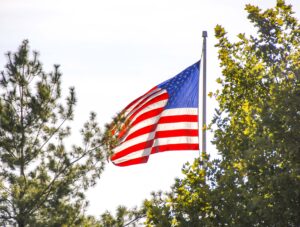 WASHINGTON — A gobsmacked planet is wondering what’s next from President Donald Trump on the tariff spree he’s set in zigzag motion. In recent weeks, Trump has announced punishing tariffs against allies and adversaries alike, selectively paused and imposed them, doubled and then halved some, and warned late in the week that he’ll tax European wine and spirits a stratospheric 200% if the European Union doesn’t drop a 50% tariff on U.S. whiskey. His ultimate stated goal is clear: to revive American manufacturing and win compromises along the way. But people and nations whose fortunes rise and fall on trade are trying to divine a method to his machinations. So far, he’s spurred fears about slower growth and higher inflation that are dragging down the stock market and consumer confidence. “His tariff policy is erratic,” Robert Halver, at Germany’s Baader Bank, said. “So, there is no planning certainty at all.”
WASHINGTON — A gobsmacked planet is wondering what’s next from President Donald Trump on the tariff spree he’s set in zigzag motion. In recent weeks, Trump has announced punishing tariffs against allies and adversaries alike, selectively paused and imposed them, doubled and then halved some, and warned late in the week that he’ll tax European wine and spirits a stratospheric 200% if the European Union doesn’t drop a 50% tariff on U.S. whiskey. His ultimate stated goal is clear: to revive American manufacturing and win compromises along the way. But people and nations whose fortunes rise and fall on trade are trying to divine a method to his machinations. So far, he’s spurred fears about slower growth and higher inflation that are dragging down the stock market and consumer confidence. “His tariff policy is erratic,” Robert Halver, at Germany’s Baader Bank, said. “So, there is no planning certainty at all.”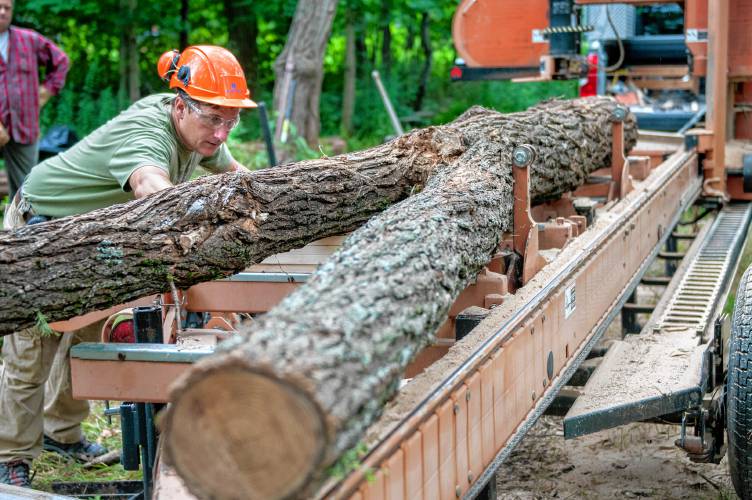
 The Commerce Department’s Bureau of Industry and Security (BIS) has formally launched two Section 232 investigations that could lead to import restrictions on copper and lumber and timber, according to Federal Register notices scheduled for publication on Thursday. Trump signed an executive order on Feb. 25 ordering the copper probe and another on March 1 for lumber and timber. Both instructed Commerce Secretary Howard Lutnick to start the investigations, which threaten to further strain trade relations with Canada and other trading partners. The Section 232 law allows up to 270 days for a probe, but White House officials said they expect Lutnick to move faster. In one sign of that, BIS set an extremely short period for public comment in the two investigations, ending on April 1. that coincides with the deadline for executive branch agencies to compete a number of trade reports for the White House. [to access the full story a PoliticoPro subscription is required]
The Commerce Department’s Bureau of Industry and Security (BIS) has formally launched two Section 232 investigations that could lead to import restrictions on copper and lumber and timber, according to Federal Register notices scheduled for publication on Thursday. Trump signed an executive order on Feb. 25 ordering the copper probe and another on March 1 for lumber and timber. Both instructed Commerce Secretary Howard Lutnick to start the investigations, which threaten to further strain trade relations with Canada and other trading partners. The Section 232 law allows up to 270 days for a probe, but White House officials said they expect Lutnick to move faster. In one sign of that, BIS set an extremely short period for public comment in the two investigations, ending on April 1. that coincides with the deadline for executive branch agencies to compete a number of trade reports for the White House. [to access the full story a PoliticoPro subscription is required]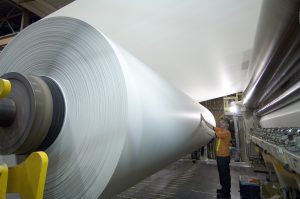 European industry is scrutinising the list of products drawn up by the European Commission in response to US tariffs on steel and aluminium, and not everyone is pleased. EU tariffs on American products are adversely affecting EU manufacturers of wines, plastics and pulp among other sectors relying on imported products hit by tariffs or caught as collateral victims of the trade war between both sides of the Atlantic. …The European pulp and paper industry has also reacted after seeing imports of the products from the US on the EU list. The EU imported €962 millions’ worth of pulp and €650 millions worth of paper and board from the US in 2023. In exchange European exports of pulp and paper and board were worth €238 million and €2.4 billion respectively. The sector has no interest in a trade war with the Americans. Jori Ringman, Director General, said that “EU and US consumers who need basic hygiene products” were going to be impacted as well as “a whole range of sectors using paper packaging.”
European industry is scrutinising the list of products drawn up by the European Commission in response to US tariffs on steel and aluminium, and not everyone is pleased. EU tariffs on American products are adversely affecting EU manufacturers of wines, plastics and pulp among other sectors relying on imported products hit by tariffs or caught as collateral victims of the trade war between both sides of the Atlantic. …The European pulp and paper industry has also reacted after seeing imports of the products from the US on the EU list. The EU imported €962 millions’ worth of pulp and €650 millions worth of paper and board from the US in 2023. In exchange European exports of pulp and paper and board were worth €238 million and €2.4 billion respectively. The sector has no interest in a trade war with the Americans. Jori Ringman, Director General, said that “EU and US consumers who need basic hygiene products” were going to be impacted as well as “a whole range of sectors using paper packaging.”



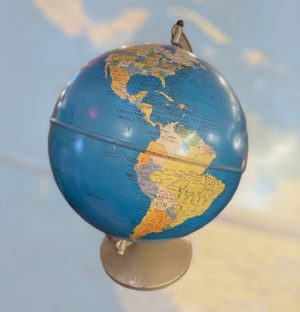 Trump’s escalating trade tariffs will hit world growth and raise inflation, the OECD has predicted. Canada and Mexico are forecast to see the biggest impact as they have had the harshest tariffs imposed on them, but US growth is also expected to be hit. …Trump has imposed 25% tariffs on all steel and aluminium imports. The US has also imposed 25% tariffs on other imports from Mexico and Canada – with some exemptions – and a 20% levy on Chinese goods. Canada and the EU have announced retaliatory tariffs. …Canada’s economy is predicted to grow by just 0.7% this year and in 2026, compared with the previous forecast of 2% for both years. Mexico is now forecast to contract by 1.3% this year and shrink a further 0.6% next year, instead of growing by 1.2% and 1.6%. Growth in the US has also been downgraded, with growth of 2.2% this year and 1.6% in 2025, down from previous forecasts of 2.4% and 2.1% China’s growth forecast will fall slightly to 4.8%.
Trump’s escalating trade tariffs will hit world growth and raise inflation, the OECD has predicted. Canada and Mexico are forecast to see the biggest impact as they have had the harshest tariffs imposed on them, but US growth is also expected to be hit. …Trump has imposed 25% tariffs on all steel and aluminium imports. The US has also imposed 25% tariffs on other imports from Mexico and Canada – with some exemptions – and a 20% levy on Chinese goods. Canada and the EU have announced retaliatory tariffs. …Canada’s economy is predicted to grow by just 0.7% this year and in 2026, compared with the previous forecast of 2% for both years. Mexico is now forecast to contract by 1.3% this year and shrink a further 0.6% next year, instead of growing by 1.2% and 1.6%. Growth in the US has also been downgraded, with growth of 2.2% this year and 1.6% in 2025, down from previous forecasts of 2.4% and 2.1% China’s growth forecast will fall slightly to 4.8%.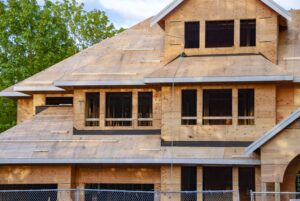 The Trump administration’s tariffs on imported goods from Canada, Mexico and China — some already in place, others set to take effect in a few weeks — are already driving up the cost of building materials used in new residential construction and home remodeling projects. The tariffs are projected to raise the costs that go into building a single-family home in the U.S. by US$7,500 to US$10,000, according to the NAHB. We Buy Houses in San Francisco, which purchases foreclosed homes and then typically renovates and sells them, is increasing prices on its refurbished properties between 7% and 12%. That’s even after stockpiling 62% more Canadian lumber than usual. …The timing of the tariffs couldn’t be worse as this is typically the busiest time of year for home sales. …Confusion over the timing and scope of the tariffs, and their impact on the economy, could have a bigger chilling effect on the new-home market than higher prices.
The Trump administration’s tariffs on imported goods from Canada, Mexico and China — some already in place, others set to take effect in a few weeks — are already driving up the cost of building materials used in new residential construction and home remodeling projects. The tariffs are projected to raise the costs that go into building a single-family home in the U.S. by US$7,500 to US$10,000, according to the NAHB. We Buy Houses in San Francisco, which purchases foreclosed homes and then typically renovates and sells them, is increasing prices on its refurbished properties between 7% and 12%. That’s even after stockpiling 62% more Canadian lumber than usual. …The timing of the tariffs couldn’t be worse as this is typically the busiest time of year for home sales. …Confusion over the timing and scope of the tariffs, and their impact on the economy, could have a bigger chilling effect on the new-home market than higher prices.
 The US housing market showed mixed signals in February, with a sharp rise in housing starts contrasting with a decline in building permits. According to the latest data from the U.S. Census Bureau, new residential construction activity picked up, but future construction intentions weakened, raising questions about the sector’s near-term strength. Privately-owned housing starts surged to a seasonally adjusted annual rate of 1.501 million in February, marking an 11.2% increase from January’s revised figure of 1.350 million. The single-family sector led the gains, with starts rising 11.4% to 1.108 million units. However, despite this strong monthly performance, overall starts remained 2.9% below February 2024 levels, signaling ongoing challenges in year-over-year growth. …This decline extended the downward trend, with permits now 6.8% below year-ago levels. Single-family authorizations remained relatively stable at 992,000, down just 0.2% from January.
The US housing market showed mixed signals in February, with a sharp rise in housing starts contrasting with a decline in building permits. According to the latest data from the U.S. Census Bureau, new residential construction activity picked up, but future construction intentions weakened, raising questions about the sector’s near-term strength. Privately-owned housing starts surged to a seasonally adjusted annual rate of 1.501 million in February, marking an 11.2% increase from January’s revised figure of 1.350 million. The single-family sector led the gains, with starts rising 11.4% to 1.108 million units. However, despite this strong monthly performance, overall starts remained 2.9% below February 2024 levels, signaling ongoing challenges in year-over-year growth. …This decline extended the downward trend, with permits now 6.8% below year-ago levels. Single-family authorizations remained relatively stable at 992,000, down just 0.2% from January.  Trump administration officials are roiled in debate over how to implement the president’s pledge to equalize U.S. tariffs with those charged by other nations, with aides scrambling to meet the president’s self-imposed deadline of April 2 to debut a plan. Officials have recently weighed whether to simplify the complex task of devising new tariff rates for hundreds of U.S. trading partners by instead sorting nations into one of three tariff tiers, according to people close to the policy discussions, who emphasized that the situation remains fluid and could evolve in the coming weeks. The proposal was later ruled out, said an administration official close to the talks, adding that Trump’s team is still trying to sort how to implement an individualized rate for each nation. …The reciprocal tariff plan is expected to be introduced on April 2, along with additional 25% duties on a handful of industries, such as autos, semiconductors and pharmaceuticals.
Trump administration officials are roiled in debate over how to implement the president’s pledge to equalize U.S. tariffs with those charged by other nations, with aides scrambling to meet the president’s self-imposed deadline of April 2 to debut a plan. Officials have recently weighed whether to simplify the complex task of devising new tariff rates for hundreds of U.S. trading partners by instead sorting nations into one of three tariff tiers, according to people close to the policy discussions, who emphasized that the situation remains fluid and could evolve in the coming weeks. The proposal was later ruled out, said an administration official close to the talks, adding that Trump’s team is still trying to sort how to implement an individualized rate for each nation. …The reciprocal tariff plan is expected to be introduced on April 2, along with additional 25% duties on a handful of industries, such as autos, semiconductors and pharmaceuticals.

 President Trump’s tariffs could increase material costs for the average new home by as much as $10,000, according to the National Association of Home Builders. The trade group said it has received anecdotal reports from members that Trump’s plan would raise material prices by between $7,500 and $10,000 for the average new single-family home. …The NAHB said softwood lumber is mainly sourced from Canada, while gypsum, a component of drywall, comes primarily from Mexico. Other materials like steel and aluminum — in addition to completed home appliances — are imported to the U.S. from China, the group said. An implementation of the 25% tariff on Canada and Mexico as previously laid out by Trump would raise total costs for imported construction materials by more than $3 billion, according to the NAHB.
President Trump’s tariffs could increase material costs for the average new home by as much as $10,000, according to the National Association of Home Builders. The trade group said it has received anecdotal reports from members that Trump’s plan would raise material prices by between $7,500 and $10,000 for the average new single-family home. …The NAHB said softwood lumber is mainly sourced from Canada, while gypsum, a component of drywall, comes primarily from Mexico. Other materials like steel and aluminum — in addition to completed home appliances — are imported to the U.S. from China, the group said. An implementation of the 25% tariff on Canada and Mexico as previously laid out by Trump would raise total costs for imported construction materials by more than $3 billion, according to the NAHB.
 LOS ANGELES —
LOS ANGELES — 
 What are Musk, Trump and the congressional right really after? Anyone who works in land management knows these agencies have long gone underfunded and unsupported by Republicans, rendering them less and less effective as the demands on them grow ever more pressing. Now this bloodletting is accelerating, and soon it will be time to go for the throat. As these agencies flounder, turning their lands over to private administration — to timber, mineral and oil extraction or to private ownership and development — will begin to seem logical and even appealing. While sustainable logging can be a valuable forest management tool, research shows that when lands are managed primarily for resource extraction, they become less resilient to wildfire. This is a shortsighted, profit-driven turn toward a land-use model that is ultimately unsustainable. What will the public be left with? Will we still have places to hike, fish, hunt, dirt-bike and ski? Or will a new landlord be setting new rates?
What are Musk, Trump and the congressional right really after? Anyone who works in land management knows these agencies have long gone underfunded and unsupported by Republicans, rendering them less and less effective as the demands on them grow ever more pressing. Now this bloodletting is accelerating, and soon it will be time to go for the throat. As these agencies flounder, turning their lands over to private administration — to timber, mineral and oil extraction or to private ownership and development — will begin to seem logical and even appealing. While sustainable logging can be a valuable forest management tool, research shows that when lands are managed primarily for resource extraction, they become less resilient to wildfire. This is a shortsighted, profit-driven turn toward a land-use model that is ultimately unsustainable. What will the public be left with? Will we still have places to hike, fish, hunt, dirt-bike and ski? Or will a new landlord be setting new rates?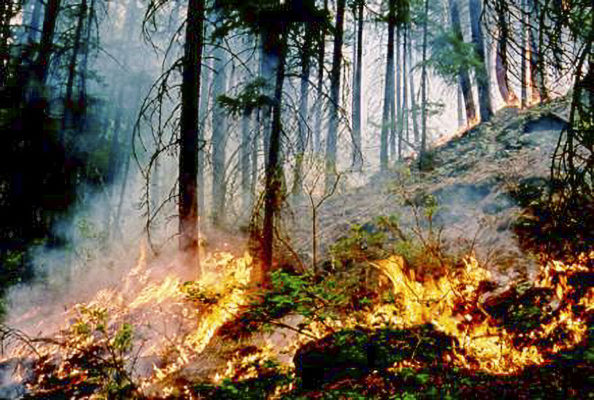 Washington’s Department of Natural Resources says it’s coming up with backup plans to address the growing threat of serious wildfires in the state. The typically close working relationship with federal forest managers has frayed under the Trump Administration. It started in mid-February, when the U.S. Department of Agriculture cut thousands of probationary employees at the U.S. Forest Service. The USDA is in charge of stewarding places like the Mount Baker-Snoqualmie National Forest and the Gifford-Pinchot National Forest. Altogether, about 2,000 employees across the country were fired. The USDA emphasized that no “operational firefighters” had been let go, and argued the critical work of responding to wildfires would not be interrupted. …Grassroots Wildland Firefighters estimated that three-quarters of the employees laid off had secondary wildland firefighting duties, meaning firefighting wasn’t their primary job, but they were pulled in to fight fires as needed.
Washington’s Department of Natural Resources says it’s coming up with backup plans to address the growing threat of serious wildfires in the state. The typically close working relationship with federal forest managers has frayed under the Trump Administration. It started in mid-February, when the U.S. Department of Agriculture cut thousands of probationary employees at the U.S. Forest Service. The USDA is in charge of stewarding places like the Mount Baker-Snoqualmie National Forest and the Gifford-Pinchot National Forest. Altogether, about 2,000 employees across the country were fired. The USDA emphasized that no “operational firefighters” had been let go, and argued the critical work of responding to wildfires would not be interrupted. …Grassroots Wildland Firefighters estimated that three-quarters of the employees laid off had secondary wildland firefighting duties, meaning firefighting wasn’t their primary job, but they were pulled in to fight fires as needed.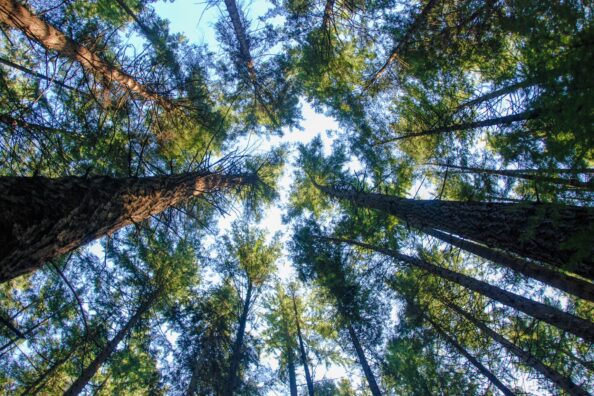 The Alaska Forest Association and two of its members have taken legal action against the US Forest Service. The lawsuit … seeks to compel the federal agency to comply with the Tongass Timber Reform Act’s mandate for timber sales, a move that could help revive the struggling timber industry in southeast Alaska. “Federal law requires the Forest Service to sell enough timber every year to meet market demand,” said Frank Garrison, attorney with the Pacific Legal Foundation, which represents the plaintiffs that include Viking Lumber and Alcan Timber. “…the agency has violated federal law three times over.” The dispute stems from the US Forest Service’s 2016 Management Plan, which outlined a gradual transition from selling old-growth timber to younger trees over a ten-year period. … However, the plaintiffs argue that the agency abandoned the plan, ceasing old-growth timber sales immediately and failing to provide sufficient young-growth timber as promised.
The Alaska Forest Association and two of its members have taken legal action against the US Forest Service. The lawsuit … seeks to compel the federal agency to comply with the Tongass Timber Reform Act’s mandate for timber sales, a move that could help revive the struggling timber industry in southeast Alaska. “Federal law requires the Forest Service to sell enough timber every year to meet market demand,” said Frank Garrison, attorney with the Pacific Legal Foundation, which represents the plaintiffs that include Viking Lumber and Alcan Timber. “…the agency has violated federal law three times over.” The dispute stems from the US Forest Service’s 2016 Management Plan, which outlined a gradual transition from selling old-growth timber to younger trees over a ten-year period. … However, the plaintiffs argue that the agency abandoned the plan, ceasing old-growth timber sales immediately and failing to provide sufficient young-growth timber as promised.
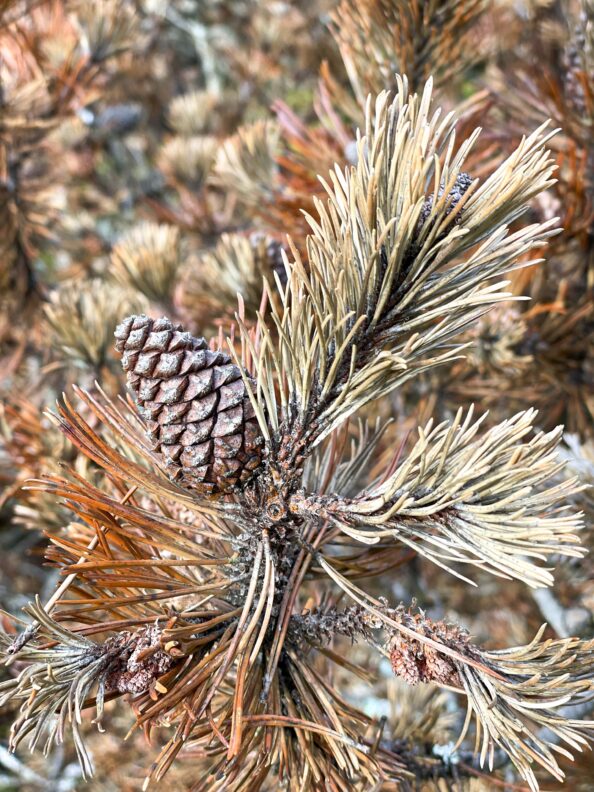 It’s now clear that some moves President Trump has authorized his pal Elon Musk and the so-called Department of Government Efficiency to make will thwart at least a few of Trump’s own often-repeated priorities. …Then there are two moves that figure to make the next fire season, coming up in late spring or early summer, as bad as or worse than recent ones. Trump legitimately repeats the conviction that cleaning forest floors can reduce the intensity and frequency of wildfires. He consistently and falsely blames California’s government for not doing this. …With Musk’s aid, though, he fired 3,400 Forest Service workers in mid-February who were still on probation in their first year of employment, many of whom had been hired to do the job Trump calls critical to stopping fires. …If he knew these firings completely contradict priorities he has trumpeted, why would he have approved them?
It’s now clear that some moves President Trump has authorized his pal Elon Musk and the so-called Department of Government Efficiency to make will thwart at least a few of Trump’s own often-repeated priorities. …Then there are two moves that figure to make the next fire season, coming up in late spring or early summer, as bad as or worse than recent ones. Trump legitimately repeats the conviction that cleaning forest floors can reduce the intensity and frequency of wildfires. He consistently and falsely blames California’s government for not doing this. …With Musk’s aid, though, he fired 3,400 Forest Service workers in mid-February who were still on probation in their first year of employment, many of whom had been hired to do the job Trump calls critical to stopping fires. …If he knew these firings completely contradict priorities he has trumpeted, why would he have approved them?
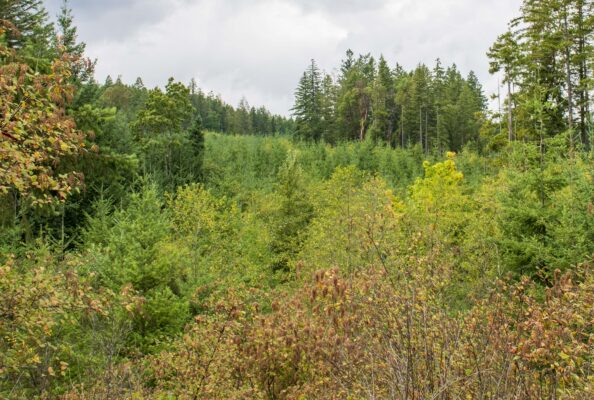 Businesses, communities, and wildlife across a vast portion of western Washington, western Oregon, and northwestern California rely on healthy national forests. Since 1994, the Northwest Forest Plan (NWFP) has guided conservation, recreation, timber production, and other uses of these 19.2 million acres of species-rich and economically important lands and rivers, and now, as it does periodically, the U.S. Forest Service is updating the NWFP… The scientists and land managers who authored the original NWFP recognized the importance of drawing on the best available science. They also had the foresight to incorporate ways to monitor the forests and adjust management if their assumptions—for example, about the plan’s impact on nature and communities—proved wrong… The Forest Service is
Businesses, communities, and wildlife across a vast portion of western Washington, western Oregon, and northwestern California rely on healthy national forests. Since 1994, the Northwest Forest Plan (NWFP) has guided conservation, recreation, timber production, and other uses of these 19.2 million acres of species-rich and economically important lands and rivers, and now, as it does periodically, the U.S. Forest Service is updating the NWFP… The scientists and land managers who authored the original NWFP recognized the importance of drawing on the best available science. They also had the foresight to incorporate ways to monitor the forests and adjust management if their assumptions—for example, about the plan’s impact on nature and communities—proved wrong… The Forest Service is 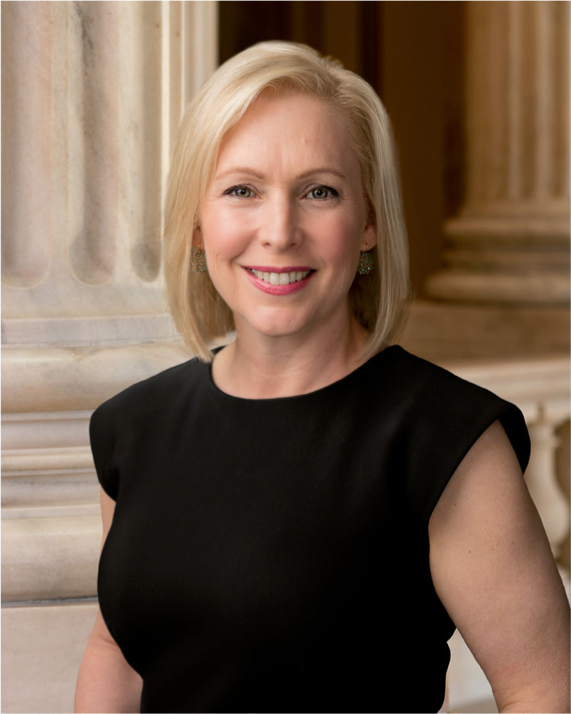
 WASHINGTON — Three former Environmental Protection Agency leaders sounded an alarm Friday, saying
WASHINGTON — Three former Environmental Protection Agency leaders sounded an alarm Friday, saying 

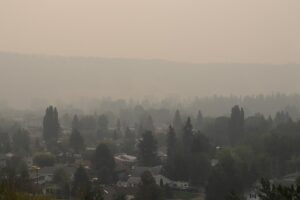 HORRY COUNTY, S.C. — The
HORRY COUNTY, S.C. — The 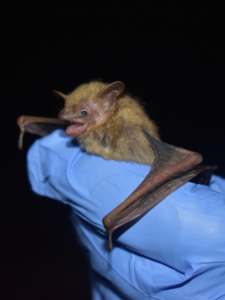
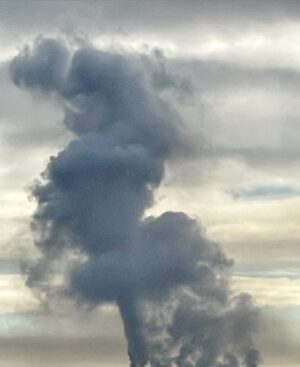 Donald Trump’s administration is to reconsider the official finding that greenhouse gases are harmful to public health, a move that threatens to rip apart the foundation of the US’s climate laws, amid a stunning barrage of actions to weaken or repeal a host of pollution limits upon power plants, cars and waterways. Trump’s Environmental Protection Agency (EPA) issued an extraordinary cavalcade of pollution rule rollbacks on Wednesday, led by the announcement it would potentially scrap a landmark 2009 finding by the US government that planet-heating gases, such carbon dioxide, pose a threat to human health. The so-called endangerment finding, which followed a supreme court ruling that the EPA could regulate greenhouse gases, provides the underpinning for all rules aimed at cutting the pollution that scientists have unequivocally found is worsening the climate crisis.
Donald Trump’s administration is to reconsider the official finding that greenhouse gases are harmful to public health, a move that threatens to rip apart the foundation of the US’s climate laws, amid a stunning barrage of actions to weaken or repeal a host of pollution limits upon power plants, cars and waterways. Trump’s Environmental Protection Agency (EPA) issued an extraordinary cavalcade of pollution rule rollbacks on Wednesday, led by the announcement it would potentially scrap a landmark 2009 finding by the US government that planet-heating gases, such carbon dioxide, pose a threat to human health. The so-called endangerment finding, which followed a supreme court ruling that the EPA could regulate greenhouse gases, provides the underpinning for all rules aimed at cutting the pollution that scientists have unequivocally found is worsening the climate crisis. President Trump is pushing federal agencies to expand timber harvests… The U.S. Forest Service is already set to increase the number of trees it harvests to one of the highest levels since 2019, a result of Biden-era policies. But advocates argue that we need trees now more than ever and that this increase in timber harvest doesn’t make sense. The Forest Service is facing a lawsuit
President Trump is pushing federal agencies to expand timber harvests… The U.S. Forest Service is already set to increase the number of trees it harvests to one of the highest levels since 2019, a result of Biden-era policies. But advocates argue that we need trees now more than ever and that this increase in timber harvest doesn’t make sense. The Forest Service is facing a lawsuit 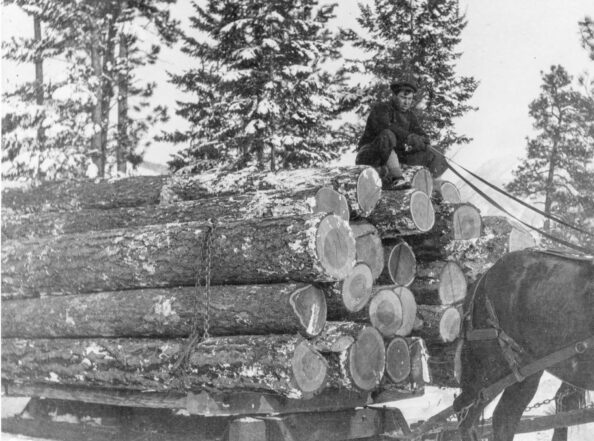 Among the wave of humanity that came to Canada in the 19th century were hundreds of thousands of Irish, some of whom ended up in Bradford. …Between 1815 and 1840, about 450,000 Irish migrated to the British North American colonies. Cheap labour was needed in lumber camps and for construction of the Welland Canal and the Rideau Canal. Canada represented a new hope. Irish migration was encouraged by leaflets circulated by Canadian lumber merchants and the British government. For their part, lumber merchants realized money could be made in loading their vessels with would-be settlers on the return trip from Britain. …Irish migration to Canada increased when Ireland was struck by the Potato Famine due to widespread starvation. During this period, more than one million Irish died from starvation and resultant diseases. Even more fled overseas, many to Canada. …In 1847 alone, at least 110,000 Irish left Irish and British ports for Canada. The tragedy is many didn’t make it. …On this St. Patrick’s Day, raise a toast to them.
Among the wave of humanity that came to Canada in the 19th century were hundreds of thousands of Irish, some of whom ended up in Bradford. …Between 1815 and 1840, about 450,000 Irish migrated to the British North American colonies. Cheap labour was needed in lumber camps and for construction of the Welland Canal and the Rideau Canal. Canada represented a new hope. Irish migration was encouraged by leaflets circulated by Canadian lumber merchants and the British government. For their part, lumber merchants realized money could be made in loading their vessels with would-be settlers on the return trip from Britain. …Irish migration to Canada increased when Ireland was struck by the Potato Famine due to widespread starvation. During this period, more than one million Irish died from starvation and resultant diseases. Even more fled overseas, many to Canada. …In 1847 alone, at least 110,000 Irish left Irish and British ports for Canada. The tragedy is many didn’t make it. …On this St. Patrick’s Day, raise a toast to them.